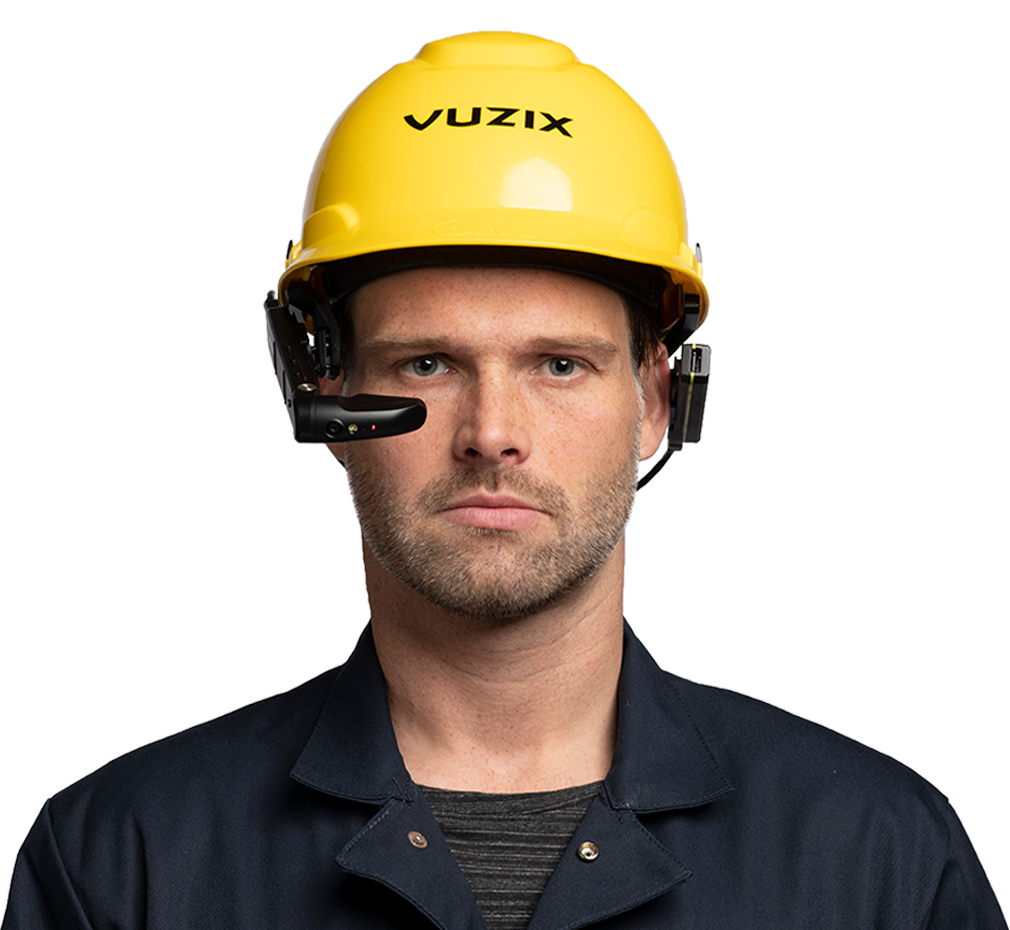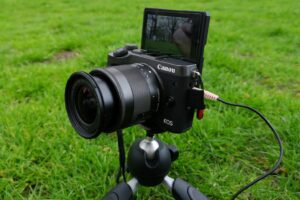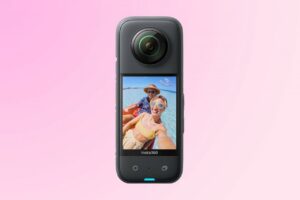Smart Glasses for Navigation is changing how we explore the world. Imagine effortlessly navigating unfamiliar streets or complex environments with a heads-up display showing you the way. This technology combines the convenience of a smartphone with the immersion of augmented reality to provide a unique and intuitive navigation experience. We’ll delve into the features, user experience, integration with other tech, and potential use cases of these smart glasses.
From map-based directions to augmented reality overlays, smart glasses navigation offers a range of options. We’ll cover how these glasses utilize GPS and other location data to guide you, and explore how public transport information is integrated into the experience. We’ll also examine the interface design, focusing on intuitive controls and a positive user experience.
Introduction to Smart Glasses Navigation
Smart glasses for navigation are wearable devices that overlay directional information and other relevant data directly onto the user’s field of vision. They offer a hands-free and potentially more intuitive way to navigate compared to traditional methods like smartphones or paper maps. This technology has the potential to revolutionize travel and improve safety for users in various situations.
The fundamental principle behind smart glasses navigation is the integration of a sophisticated mapping system with real-time location data. This allows the glasses to provide turn-by-turn directions, display landmarks, and suggest alternative routes based on traffic conditions or user preferences. The key is to provide the user with a clear and concise visualization of their surroundings, overlaid with navigational information.
Types of Smart Glasses for Navigation
Different types of smart glasses cater to various needs and budgets. The primary distinction lies in the level of integrated functionality and processing power. Basic models often focus on providing simple directional cues, while more advanced models include features like real-time traffic updates, integrated payment systems, and augmented reality overlays. Some smart glasses use specialized sensors for environmental data like weather forecasts or nearby points of interest.
User Interface Elements for Navigation
The user interface for smart glasses navigation is designed to be intuitive and easily accessible without requiring significant eye movements. Typical elements include:
- Visual Directions: Clear graphical representations of directions, often with arrows or highlighted paths projected onto the user’s view. These can be accompanied by spoken instructions for those with visual impairments.
- Landmark Recognition: Smart glasses can identify and highlight nearby landmarks, making navigation more straightforward, especially in unfamiliar areas. For example, if the user approaches a coffee shop, the glasses might display a notification and a graphic of the shop overlaid on the real-world view.
- Interactive Map: A virtual map displayed in the user’s field of vision, allowing zooming, panning, and selection of alternative routes. The map can also integrate information about the surrounding environment, such as points of interest or businesses.
- Touch Controls (or Voice Controls): User interaction is typically facilitated through touch controls on the glasses’ frames or voice commands. For example, the user can select options on the interactive map or initiate voice commands to change the navigation parameters.
Navigation Features and Capabilities
Smart glasses navigation is rapidly evolving, offering users a hands-free and often more immersive experience compared to traditional navigation methods. These devices leverage advancements in display technology, processing power, and location services to provide real-time guidance, minimizing distractions and maximizing efficiency.
The core capabilities of smart glasses navigation extend beyond simple directions. They integrate various features to provide a comprehensive and user-friendly experience, ranging from map-based guidance to augmented reality overlays. This allows for a seamless transition between different modes, adapting to the user’s needs and environment.
Navigation Modes
Smart glasses offer a variety of navigation modes to suit different user preferences and situations. Map-based navigation presents a traditional, familiar view of the route overlaid on a visual representation of the surroundings. Augmented reality (AR) navigation, on the other hand, superimposes navigational information directly onto the user’s real-world view. This provides a more intuitive and contextual understanding of the path to be followed.
Real-time Traffic Information
Real-time traffic information is crucial for optimizing travel time and minimizing delays. Smart glasses navigation systems integrate with traffic data sources to provide dynamic updates on road conditions. This information can inform users about potential congestion, allowing them to adjust their routes accordingly. For instance, if a user is experiencing unexpected traffic delays, the glasses can provide alternate routes to help them reach their destination efficiently.
GPS and Other Location Technologies
Accurate location information is paramount for effective navigation. Smart glasses navigation relies on GPS signals, along with other location technologies like Wi-Fi positioning and cellular triangulation. These technologies work in conjunction to provide a precise location fix, allowing for accurate route calculation and real-time updates. The combination of these technologies enhances the reliability and precision of the navigation system.
Navigation Functionalities
| Feature | Description | Example |
|---|---|---|
| Route Planning | Calculates the optimal path from origin to destination. | Determining the fastest route considering traffic conditions. |
| Turn-by-Turn Directions | Provides precise instructions for each turn. | “Turn left at the next intersection.” |
| Real-Time Updates | Adjusts the navigation based on changing conditions. | Redirecting the user to an alternative route if traffic becomes heavy. |
| POI (Point of Interest) Search | Allows users to locate nearby businesses or landmarks. | Finding the nearest coffee shop. |
| Voice Guidance | Provides spoken instructions for navigation. | “Continue straight for 200 meters.” |
Public Transport Integration
Smart glasses navigation systems are increasingly integrating public transport information. This feature allows users to plan and execute trips using buses, trains, or subways. The system can provide real-time schedules, estimated arrival times, and route information for various public transport options. Users can seamlessly switch between different modes of transportation within the same trip, offering a holistic navigation experience.
User Experience and Interface Design
Smart glasses navigation relies heavily on a seamless and intuitive user experience. The interface must be designed to minimize distractions and maximize efficiency, allowing users to focus on their surroundings while receiving critical navigation information. A well-designed interface will encourage user adoption and make the glasses a valuable tool for daily use.
The design of the smart glasses interface must prioritize clarity and simplicity. Users should be able to quickly access and understand navigation instructions without needing extensive training or manual exploration. Visual cues, concise text, and effective feedback mechanisms are crucial to this goal. The user experience must also account for potential environmental factors, such as varying light conditions and user movement.
User Experience Considerations
Designing for a positive user experience with smart glasses navigation involves careful consideration of several key elements. Visual clarity is paramount, as the information displayed must be easily readable and distinguishable from the surrounding environment. The interface must be adaptable to different lighting conditions, ensuring readability in both bright sunlight and low-light situations. Furthermore, the interface should adjust to the user’s physical activity, offering seamless navigation even during movement or while performing tasks. This includes incorporating haptic feedback and audio cues for important information. Lastly, the design should be adaptable to different user preferences, allowing users to customize the interface to their specific needs.
Interface Design for Ease of Use
Intuitive navigation is crucial for a positive user experience. The interface should allow for quick and effortless access to essential navigation information. Key features should be placed in readily visible locations, and the design should be structured to support natural user actions. This includes utilizing gestures or voice commands, which offer a more intuitive and hands-free interaction method. The interface should provide clear visual cues, allowing users to understand their current location and destination in relation to their surroundings.
Factors Contributing to a Positive User Experience
Several factors contribute to a positive user experience with smart glasses navigation. Firstly, the interface should be responsive and reliable, ensuring that navigation instructions are accurate and updated in real-time. Secondly, the user interface should be adaptable to different environments and user needs. For instance, the display should automatically adjust to changing light conditions and be configurable based on user preferences. Thirdly, a robust error-handling mechanism is essential, providing users with clear and helpful feedback when errors occur. This minimizes frustration and encourages continued use. Finally, the design should prioritize user privacy and data security, ensuring that user information is protected.
Comparison of UI Elements
| UI Element | Pros | Cons |
|---|---|---|
| Visual Icons | Quick comprehension, easily recognizable, less text-dependent | Potential for misinterpretation if not well-designed, limited expressiveness |
| Text-based Instructions | Clear and unambiguous information, detail-oriented | Can be cumbersome and time-consuming to read, potentially overwhelming |
| Gesture Controls | Intuitive and hands-free, natural interaction | Requires calibration, may not be suitable for all tasks, potentially slower than voice commands |
| Voice Commands | Hands-free, quick access to information | Potential for misinterpretation, requires a stable connection, not ideal in noisy environments |
Successful Interface Designs
Examples of successful interface designs in smart glasses navigation often incorporate a combination of visual cues, concise text, and interactive elements. Many successful implementations leverage natural gestures for navigation, allowing for a more intuitive and hands-free experience. Additionally, the use of haptic feedback, such as subtle vibrations, can provide important confirmations and feedback without requiring constant visual attention. The Google Glass project, though not commercially successful in its original form, showcased the potential of smart glasses for navigation, highlighting the importance of user experience and clear interface design. Other successful examples include interfaces that dynamically adjust their display based on the user’s location and surroundings, providing relevant information at the right time.
Integration with Other Technologies

Source: cloudfront.net
Smart glasses for navigation are cool, but imagine the security risks. Data breaches in financial technology are a serious concern, like the challenges highlighted in this article about challenges of cybersecurity in financial technology. If these glasses store sensitive location or payment data, robust security measures are crucial for user safety.
Smart glasses navigation isn’t an isolated system; its effectiveness hinges on seamless integration with other devices and technologies. This interconnectedness enhances user experience by providing a more comprehensive and contextually aware navigation solution. By leveraging data from multiple sources, the glasses can offer richer, more dynamic guidance.
Wearable Device Integration
Integrating smart glasses navigation with other wearable devices like smartwatches and fitness trackers is crucial for a holistic user experience. A smartwatch, for example, can display notifications and alerts alongside navigation instructions, preventing distractions while keeping the user informed. Fitness tracking data can be seamlessly combined with navigation, allowing for tailored routes based on the user’s current fitness level and goals. This interconnectedness streamlines information delivery, allowing the user to stay focused on the task at hand.
Compatibility with Mobile Devices
Compatibility with mobile devices is fundamental. Navigation data, maps, and real-time traffic updates are typically handled by a smartphone or tablet. Smart glasses act as a visual display and input device, relaying information from the mobile device to the user’s field of vision. This arrangement offers a hands-free, unobstructed view of the surroundings, allowing the user to focus on navigation without constantly checking their phone.
Integration with Other Applications
Beyond fitness tracking, integration with other applications is possible. For instance, a user could seamlessly transition from navigation to checking a calendar event or accessing their contacts without taking off their glasses. Real-time information from other apps can be displayed alongside navigation instructions, creating a dynamic and integrated experience. Imagine checking restaurant reviews while navigating to a new location – all within the smart glasses interface. This seamless integration with various applications provides a more complete and personalized user experience.
Data Flow Diagram
This simplified diagram illustrates the data flow between various devices when using smart glasses navigation. The smartphone acts as the central hub, receiving data from GPS, traffic services, and other relevant sources. This data is then transmitted wirelessly to the smart glasses, which processes it and displays the navigation instructions to the user. The smartwatch can receive notifications from the smartphone and display them, complementing the information presented in the smart glasses. Similarly, fitness trackers can transmit data regarding the user’s activity level and preferences, enabling personalized navigation routes.
Smart glasses for navigation are really cool, offering a hands-free way to get around. But imagine how these same technologies could be applied to alternative financial technology platforms for small businesses, like those described in this resource: alternative financial technology platforms for small businesses. Maybe someday, these glasses could help business owners manage their finances on the go, just like they help people navigate streets.
The possibilities are exciting.
Applications and Use Cases
Smart glasses navigation offers a wide range of practical applications, extending far beyond basic route guidance. Its potential to enhance productivity, safety, and accessibility is significant across diverse settings, from urban exploration to emergency response. This section delves into specific use cases, highlighting the transformative impact of this technology.
Smart glasses navigation is not just about showing directions; it’s about providing a contextualized and immersive experience that integrates seamlessly with the user’s environment. This enhanced awareness and interaction can revolutionize how we approach various tasks and challenges.
Diverse Use Cases for Urban Exploration
Smart glasses navigation can be instrumental in urban exploration, providing more than just directions. They can overlay real-time information, such as historical landmarks, local events, and nearby amenities, onto the user’s view, making the experience more engaging and informative. This richer context enhances understanding of the environment and allows for deeper exploration.
Enhanced Productivity in Various Fields
Smart glasses navigation can dramatically improve productivity across several industries. For example, in construction, workers can view real-time schematics and instructions overlaid on their field of vision, reducing errors and streamlining tasks. In retail, staff can access customer information and product details instantly, improving customer service and efficiency.
Improving Efficiency for Delivery Drivers, Smart Glasses for Navigation
Smart glasses navigation can streamline delivery operations. The glasses can display real-time traffic updates, optimal routes, and delivery instructions directly in the driver’s field of view. This eliminates the need to constantly switch between devices, reducing distractions and improving efficiency.
| Visual Representation of Enhanced Delivery Driver Efficiency | Description |
|---|---|

|
The image depicts a delivery driver wearing smart glasses. The glasses display a clear and concise map overlayed on the driver’s view of the street. Traffic flow, real-time updates, and a highlighted route are clearly visible. The driver also sees a list of upcoming deliveries, their locations, and estimated delivery times. This intuitive and immersive experience allows the driver to focus on the road while simultaneously managing their deliveries effectively. |
Potential Applications in Emergency Response Situations
Smart glasses navigation can play a crucial role in emergency response scenarios. First responders can utilize augmented reality to overlay critical information, such as building layouts, victim locations, and resource availability, directly onto their view of the scene. This immediate access to crucial data can significantly improve response times and safety. In rescue operations, for example, the glasses can display real-time location data of trapped individuals, making the rescue process more efficient and potentially saving lives. This real-time, augmented view provides vital information that can drastically improve outcomes in high-pressure situations.
Challenges and Future Trends
Smart glasses navigation, while promising, faces significant hurdles in its development and adoption. These challenges range from practical limitations like battery life to more complex issues like user experience and integration with existing technologies. Overcoming these obstacles is crucial for realizing the full potential of this technology.
The current state of smart glasses navigation systems often falls short of the seamless, intuitive experience envisioned. This is due to various technical constraints that limit the systems’ capabilities and functionality. Future advancements will focus on addressing these limitations and pushing the boundaries of what’s possible.
Key Challenges in Development and Use
The development and use of smart glasses navigation systems are hindered by a number of critical issues. These include the inherent limitations of the technology itself, as well as user-related factors like the need for comfortable and intuitive interfaces. The high cost of development and production is also a significant barrier to widespread adoption.
Technical Limitations of Current Systems
Current smart glasses navigation systems suffer from several technical limitations. One of the most significant is the limited processing power of the devices. This often results in slow response times, especially in complex environments. Furthermore, the field of view limitations can hinder the ability to comprehensively display information, which is essential for efficient navigation. Another limitation is the accuracy of location tracking, especially in indoor or complex environments. The quality and reliability of the sensors used also contribute to these inaccuracies.
Potential Future Developments and Advancements
Future advancements in smart glasses navigation are likely to focus on improving processing power, expanding the field of view, and enhancing location tracking accuracy. Integration with advanced sensor technologies, such as those that track eye movement, will likely improve user interaction and navigation. Research into lightweight, long-lasting battery solutions will be crucial to address the power consumption concerns of smart glasses.
Battery Life Challenges
Battery life is a critical constraint in smart glasses navigation. The constant need for processing, data transmission, and display refresh rates places a significant strain on the device’s battery. Addressing this issue requires innovation in battery technology and system optimization.
| Approach | Description | Advantages | Disadvantages |
|---|---|---|---|
| Improved Battery Technology | Development of smaller, higher-density batteries with longer lifespans. This could involve advancements in battery materials or cell design. | Potentially longer runtimes and reduced charging frequency. | Higher cost and potentially larger form factor, even with improved density. |
| Optimized Power Management | Implementing sophisticated power management systems that dynamically adjust power consumption based on user needs and environment. For example, reducing display brightness in low-light conditions or switching off features not actively in use. | Increased battery life by reducing unnecessary power drain. | Requires complex software and algorithms, potentially impacting user experience. |
| Hybrid Power Solutions | Combining different power sources, such as solar charging or energy harvesting from movement, to extend battery life. | Potential for extended runtimes and less reliance on traditional batteries. | Requires careful integration and may not be suitable for all use cases. Weather conditions could greatly affect solar charging, for example. |
Incorporating New Sensory Input Technologies
Integrating new sensory input technologies holds immense potential for enhancing smart glasses navigation. Technologies like eye-tracking, gesture recognition, and even haptic feedback can provide more intuitive and natural interaction with the navigation system. Imagine a system that responds to your gaze direction or hand movements, providing a more immersive and user-friendly experience.
Final Review
In conclusion, smart glasses navigation is a promising technology with the potential to revolutionize how we move through our surroundings. While current limitations like battery life remain, future advancements hold exciting possibilities. From enhancing productivity to supporting emergency response, the potential use cases are vast and diverse. The user experience, though still evolving, is rapidly becoming more intuitive, paving the way for a future where navigation is seamless and personalized.
Helpful Answers: Smart Glasses For Navigation
What are the common battery life issues with smart glasses for navigation?
Current smart glasses often have limited battery life, which can be a significant drawback. Factors like display brightness, processing power, and the use of location tracking all contribute to the drain. Different models handle this differently, and ongoing research focuses on developing more efficient components and power management strategies.
How do smart glasses navigation systems handle complex environments, like large cities or dense forests?
Navigating complex environments can be challenging. Advanced systems utilize multiple location data sources, like GPS and even visual landmarks, to create a comprehensive and accurate map. Some systems also rely on user feedback and real-time updates to refine their navigation guidance, especially in dynamic settings.
Can smart glasses navigation be used for outdoor activities, like hiking or cycling?
Absolutely. Smart glasses navigation can enhance outdoor activities by providing turn-by-turn directions, real-time location information, and even integrating with fitness tracking apps. The glasses can also overlay relevant information onto the user’s view, like trail maps or waypoints, making the activity safer and more enjoyable.
Are there any privacy concerns associated with smart glasses navigation?
Privacy is a valid concern. Users should carefully consider the level of location data being collected and shared by the smart glasses navigation system. It’s crucial to understand the privacy policies and ensure data security measures are in place to protect personal information.
Smart glasses for navigation are becoming increasingly sophisticated, offering real-time directions and information. This technology could have a huge impact on the development of financial technology in emerging markets, the development of financial technology in emerging markets , potentially boosting access to financial services in remote areas. Ultimately, this innovative approach to navigation could revolutionize how people access and utilize financial tools in various locations.
Smart glasses for navigation are really cool, offering a hands-free way to get around. But, as with many new technologies, there’s the question of how to regulate them. Similar to the complex regulation of cryptocurrencies within the fintech industry, regulation of cryptocurrencies within the fintech industry , we need to think about data privacy, security, and potential misuse when designing and implementing these devices.
Ultimately, smart glasses for navigation will need careful consideration for responsible development and use.
Smart glasses for navigation are becoming increasingly sophisticated, promising a revolution in how we get around. This innovation could potentially impact future trends in financial technology investments, especially with the integration of financial data into the navigation experience. Ultimately, smart glasses for navigation could offer more than just directions; they could become powerful tools for daily financial transactions, too.
Smart glasses for navigation are pretty cool, offering hands-free directions. Imagine how helpful this could be for people in underserved communities, especially those who lack access to traditional navigation tools, like fintech solutions for underserved communities. Ultimately, smart glasses could be a powerful tool to bridge the gap and help these communities thrive, providing easier access to essential information and resources.




